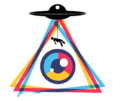209 Ouija: Who is Really in Control?

Early advertisements for the Ouija Board promised to answer questions “about the past, present and future with marvelous accuracy” and to provide a link “between the known and unknown, the material and immaterial.” This board, initially made of wood and sold for $1.50, was also referred to as a spirit or talking board. The flat board marked with letters, numbers, and other symbols, is typically used in séances and paranormal activities to communicate with spirits. Participants place their fingers on a planchette, a small heart-shaped pointer, which is believed to move around the board to spell out messages. The board has a mystique associated with it, often seen as a tool for divination or contact with the supernatural, though many consider its movements to be a result of the ideomotor effect—unconscious muscle movements by participants. So which is it? Are young girls at sleep overs just tricking themselves into thinking they are communicating with the dead? Or are Ouija boards really a tool for demonic possession as many mainstream religious groups allege?
